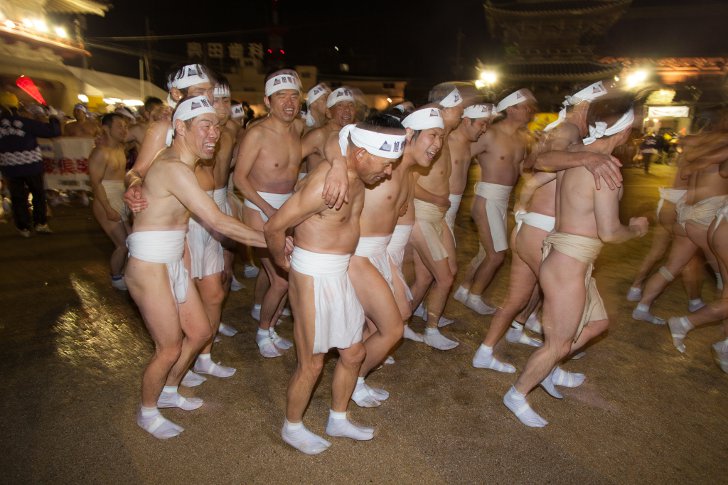The origin of the festival is unclear. According to legend, its roots go back to the Nana period of the history of Japan that covers the years from AD 710 to 794. When misfortune and disease plagued the country, people started looking for ways to get rid of back luck. They believed that nakedness could absorb evil, so a man from each village was forced to shave off all his body hair and walk through the village naked. Villagers touched him, believing that this would help them get rid of troubles.
Today’s Hadaka Matsuri has little to do with this ancient tradition. It features about 10,000 naked or mostly naked men trying to lure good luck instead of being magnets for bad luck. A small number of participants are completely naked, most wear a Japanese loincloth called fundoshi, sometimes with a short straight-sleeved coat called happi.
Participants run through a pool of cold water and then march through the city and gather at Saidai-ji Temple in Okayama. Priests throw sacred lucky sticks called the shingi from the top of the temple and participants try to catch as many as they can in hope of gaining luck for the entire year. Although fighting is prohibited, battles for the shingi sometimes turn violent. The main event begins around 10pm, but the festivities start several hours prior. They include a mock Hadaka Matsuri for children and traditional performances featuring dancers and taiko drummers.
The Hadaka Matsuri festival may seem very controversial, but one should keep in mind that nakedness is perceived differently in the Japanese culture. Japanese believe that “naked communion” helps to break down barriers and get to know people, that is why bathing facilities called onsen are so popular. People are not allowed to wear swimsuits in onsen and no one feels ashamed even when surrounded by complete strangers. Besides, most men that participate in Hadaka Matsuri do wear loincloths that won’t come undone if tied correctly.

Photo: shin7d



